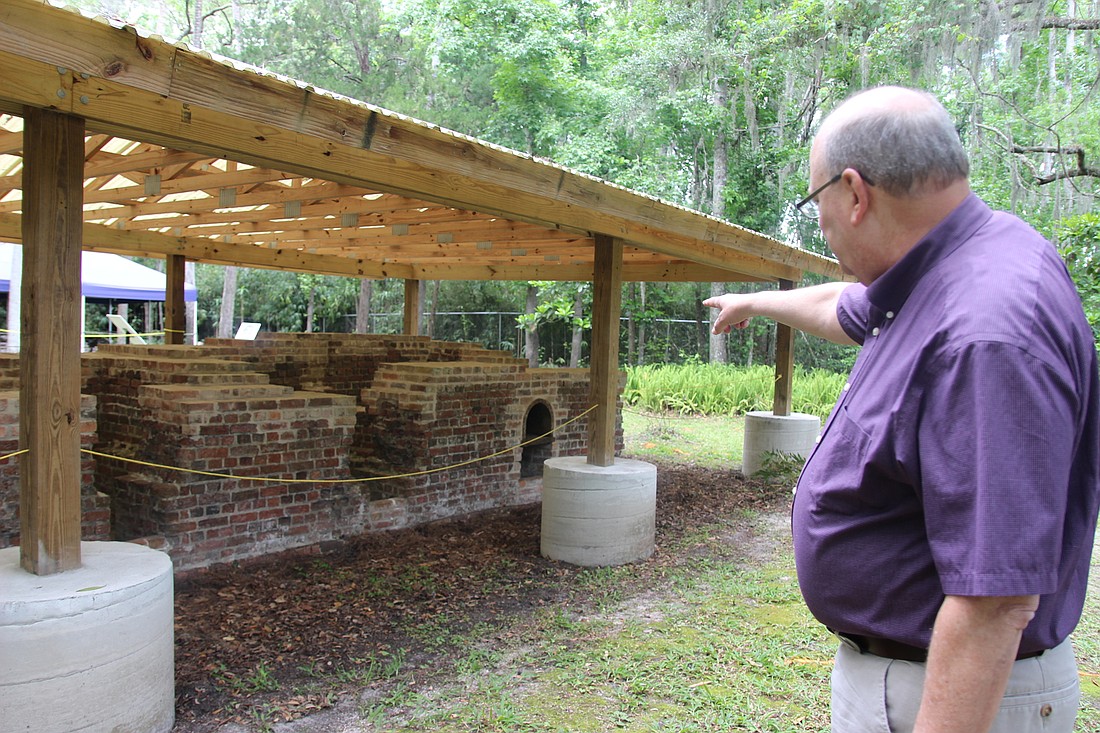- April 23, 2024
-
-
Loading

Loading

Nestled among old Florida vegetation, with the sound of traffic wafting in from the nearby Granada Boulevard, the Three Chimneys Sugar Mill and Rum Distillery archeological site sits quiet — its four centuries of what Dr. Philip Shapiro calls multinational, multicultural history awaiting to be discovered.
“It’s one of the crown jewels of our community," Shapiro said. "We have The Casements, the Three Chimneys — We have a number of sites that are unique to this area of Florida that were built before the word Ormond Beach ever came around.”
Originally known as the Swamp Settlement due to its forever-damp soil, the Three Chimneys is an Ormond Beach historical site purchased by the State of Florida in 2003. The Ormond Beach Historical Society recently received approval to continue its management plan for the site until 2028, and, OBHS hopes to continue to strive toward its long-term goal of making the site a park.
The site has come a long way since it was first discovered by Ormond Beach resident Marsha Wilson Walls, a direct descendant of one of the city's early settlers, Daniel Wilson of the Corbin Lock Company. Walls followed the written description of the site by Ormond Beach pioneer Alice Strickland and found the ruins in 1992. Shapiro said the site is believed to be the first English sugar mills in Florida.
“This is just as relevant as St. Augustine, being among the first industrial sites in this area," Shapiro said.
The history behind the Three Chimneys site goes back to 1765 when the area was developed into a 300-acre settlement to grow sugarcane for the production of sugar, molasses and rum. This occurred a year after King George III granted 20,000 acres of land in what is now Ormond Beach to Sir Richard Oswald, a rich Scottish merchant.
After the American Revolution, the sugar mill was closed. It would be reopened in 1803 by an Englishman named Henry Yonge, but he would close it again after six years due to it not being profitable. The site would continue to evolve through the years, at one point even becoming a tourist attraction run by John Anderson's half-brother, Billy Fegan, whose house front porch used to rest on the old sugar mill boilers.
“The takeaway from all of this is that this is an educational resource to be shared and appreciated that at one point, there were no laws protecting archeological sites," Shapiro said. "The miracle is that back in the day, people recycled everything, from nails to bricks. That could’ve all been disassembled to build other things, but somehow it stayed.”
Diana Simmons, past president of the Ormond Beach Historical Society, said the Three Chimneys would not be as well-preserved as it is today without the help of the preservation committee.
“You cannot imagine how hard these people work," said Simmons, who operates as a tour guide for the society's historical bus tours. "They come out here the third Saturday, every month, basically rain or shine — especially after the hurricanes — and they are responsible for keeping these grounds as beautiful as they are and allowing people like me with the bus tours to have people come in.”
The ultimate goal for OBHS can be outlined in three key parts: To preserve, to promote and to develop the site into a park like Sanchez Park. Shapiro said that is being made possible through volunteer work, partnerships, the city's help and past Volusia County's ECHO grants.
"How many communities can say, ‘we have something like this to show? To share?’" Shapiro said. "And that is why we do what we do.”